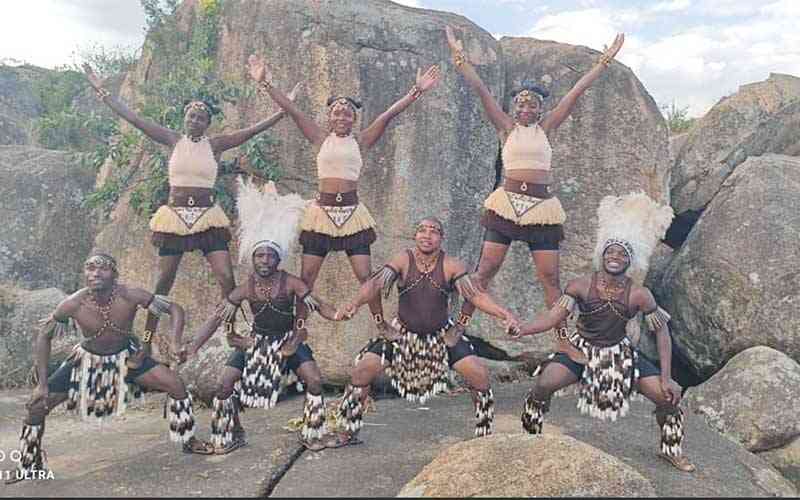
TRADITIONAL dancers and dance groups say they are struggling to maintain their position in the entertainment industry due to modernity and stiff competition from other genres such as Zimdancehall and hip-hop, which are upstaging them in contemporary Zimbabwe.
NewsDay Life & Style interviewed various traditional dancers and groups, representatives from various arts organisations working with traditional dance groups who reiterated that despite being relevant in preserving the country’s cultural heritage, traditional dance is facing stigma and stiff competition which is robbing them of their popularity.
“Traditional dance has been a major signifier of cultural identity and uniqueness, but modernisation has diffused and infiltrated the Zimbabwean culture. We cannot ignore a massive wave of globalisation that has become very powerful and we are being swept by the tide from our culture as each day passes,” Obey Jasi, executive director of Tridawn Publishing and Arts Trust, said.
He expressed worry that the modern entertainment industry would rather promote naked and explicit dancers, while dismissing traditional dance as paganism.
He also noted that societal perceptions and religious beliefs about traditional dance have made it difficult for the younger generation to fully participate and engage with traditional dance.
“Modernity has made traditional dance a backward source of entertainment and people have diverted to new genres. Traditional dance has remained in areas of origin, mostly dotted in the rural areas which has less exposure because technology has not yet reached some of the marginalised areas,” he said.
Some traditional dancers have resorted to opening culture centres for those who want to learn about their roots and origins, but few people visit the centres.
“As traditional dancers, we are trying to keep ourselves relevant in the entertainment industry by emphasising that the dance and music portrayed through art is the basis of Zimbabwean culture. Therefore, failing to appreciate traditional dance is failure to identify as Zimbabwean. We have opened culture centres for those who wish to learn their culture. However, very few people visit the centres.” Matthew Chokoreke of Nakiso Arts and Life Skills said.
- Zim, Bots in joint anti-stocktheft drive
- All set for Chibuku NeShamwari provincial finals
- All set for Chibuku NeShamwari provincial finals
- Music as vehicle of cultural exchange
Keep Reading
“Sometimes traditional dancers are paid far less than their counterparts for the same events or functions. We are dancers otherwise because we were exposed to it, not because there is complete life in it,” Taurai Mukege from Ngomakurira Arts Network Zimbabwe told NewsDay Life & Style.
Peter Mhumhi, the director of Culture Warriors and Edutainment Trust, expressed similar sentiments, saying traditional dances are being sidelined at events.
“When organising events for entertainment purposes, traditional dance is the last thing organisers think about. Music is budgeted for, but when it comes to traditional dancers and dance groups, they are negotiated with,” he said.
Despite stiff competition from modern genres and stigmatisation, traditional dancers are striving to keep traditional dance relevant both as entertainment and as the backbone of the country’s cultural heritage.
Traditional dancers have incorporated modern elements and collaborated with contemporary musicians to keep up with trends and engage with the younger generation.
“During our performances at competitions such as Chibuku NeShamwari, we thrive to maintain originality using instruments such as mbira, ngoma and hosho, but when it is for entertainment purposes, we incorporate modern elements such as guitars to draw crowds,” said Herbert Mupura, a member of the Guruve Marimba Arts Ensemble.
Mupura also noted that traditional dancers have worked with famous musicians performing at their shows to engage with the younger generation, adding that Guruve Marimba Arts Ensemble performed at Jah Prayzah’s Chiremerera album launch last year on a song called Wanga Wakarara.
Traditional dance is normally popular in communities where it is key in traditional ceremonies.
Government also often ropes in traditional dance groups in many of its programmes.
Zimbabwe National Traditional Dancers Association president Kennedy Kachuruka said: “Dances are an identity and every culture is accompanied by a certain dance, language, beliefs and ethics. Traditional dance groups showcase Zimbabwean culture beyond boarders performing at various cultural festivals.”
He added that traditional dancers are invited to welcome foreign dignitaries to help promote the country cultural identify to visitors.
Popular traditional dances include Mbende, Mbakumba, Muchongoyo, Chinyambera, Isitshikitsha and Amabhiza.






